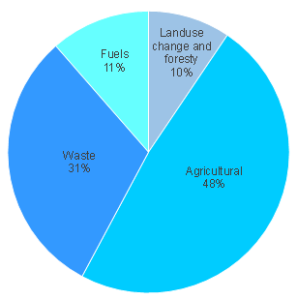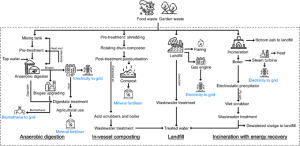The news that the Nord Stream gas pipelines have stopped leaking is a relief to all of us involved in curbing emissions from methane, but the consequences of such a massive gas leak are still of huge concern. In her latest blog, the Sustainable Gas Institute’s Dr Jasmin Cooper examines how big an effect the alleged sabotage of the pipelines might have on climate change goals.
The Nord Stream 1 and 2 pipelines are two large subsea pipelines which connect Russia to Germany. The pipelines are the primary source of Russian gas exports to Germany. Until the Russian invasion of the Ukraine in February they transported up to 55 billion cubic meters of gas per year, accounting for most of Germany’s gas imports. On September 26th 2022 two small tremors were detected by the Geological Survey of Denmark. Whilst there was no active flow through the pipelines by this point, they were still full of gas. The tremors are believed to have been caused by deliberate explosions – alleged sabotage that has resulted in four major methane leaks.
The leaks have caused concerns around the security of energy infrastructure as well as the security of energy supplies globally. After the announcement of the first leak in the Nord Stream 2 pipeline, gas prices across Europe jumped – having been falling since a previous peak in August. The leaks also raised energy security concerns in Europe as the continent heads into winter. However, Germany secured two floating liquefied natural gas (LNG) terminals in August of this year and in mid-September was in talks with Qatar and the United Arab Emirates to secure LNG deliveries. In August of this year, the mainland EU member states agreed to a plan to cut gas use by 15%3, so the damage caused to the Nord Stream pipelines may not impact gas supply so much as the rise in gas prices.
While there is still a lot of uncertainty around the leak; including the cause, the extent of the damage to the pipeline and how much natural gas has leaked out – this incident has the potential to be one of the biggest climate disasters so far in the 21st century. Subsea pipeline leaks are unusual so there are no past examples to directly compare to.
Deep Water Horizon was a drilling rig in the Gulf of Mexico which exploded in April 2010 resulting in huge damage to the marine environment from oil. The Nord Stream leaks are natural gas, so the environmental impacts will be to climate change and global warming rather than a direct impact on the marine environment and wildlife. Our only comparable large gas leaks are the Aliso Canyon gas leak, which is estimated to have emitted 97,100 tonnes4 of methane between October 23rd 2015 and February 18th 2016 and the Raspadskya coal mine leak, which was found to be emitting nearly 90 tonnes of methane per hour5 earlier this year – and could emit 764,000 tonnes of methane by the end of 2022. .
The Nord Stream pipelines while not actively transporting gas, did contain 778 million cubic meters of natural gas. This would be 360,000 to 460,000 tonnes of methane, which in CO2 equivalence is 11 million to 14 million tonnes of CO2eqb. In the context of total global methane emissions, between 2008 to 2017 total global emissions were 576 Tg CH4 per year (1 Tg = 1,000,000 tonnes), with 80 Tg CH4 per year from the oil and gas sector. So, the amount of gas stored is equal to less than 0.1% of total global methane emissions, or 0.5-0.6% of annual oil and gas methane emissions. While this may seem like a small percentage, they are similar to the methane emissions of Denmark, Ghana or Yemen in 2021. That volume of gas has an economic value – based on prices on 05 October 2022 – of €1.4 billion and is approximately 5 days’ worth of supply to Germany based on Nord Stream transport when it was operational. So from a climate, social and economic perspective, this is a catastrophic loss.
How much of the methane stored in the two pipelines will be emitted is yet to be determined. From the amount of gas stored and the images of the leak, it is evident the leak will be a big blow to ambitions to meet climate change targets. The Global Methane Pledge – launched in November 2021 – has seen over 120 countries pledge to cut their methane emissions by 30% (relative to 2020 levels) by 2030. Since then, many have launched new regulations on how their methane emissions can be slashed. The Nord Stream leaks will likely negate much of the progress made so far.
assuming natural gas is 70 to 90% methane and methane density of 0.7 kg per cubic meter
assuming GWP100 of 30 TFF
assuming gas price €174.76 per MWh; 36 PJ per 1 bcm of natural gas

 The UK biodegradable waste strategy aims to divert progressively more waste from landfills into anaerobic digestion or composting facilities for recycling. Recent studies (
The UK biodegradable waste strategy aims to divert progressively more waste from landfills into anaerobic digestion or composting facilities for recycling. Recent studies (